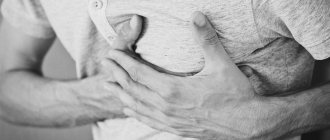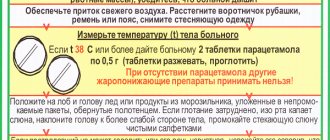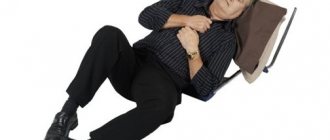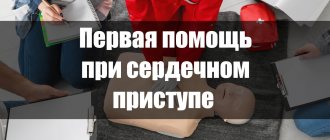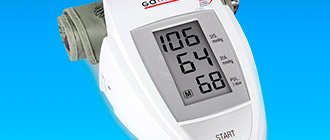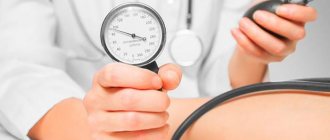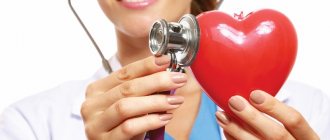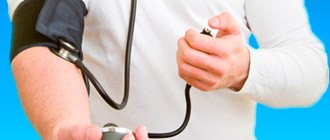Cardiac arrest: Pixabay The most common cause of death worldwide is cardiac arrest. The condition develops instantly, the outcome is determined in a matter of minutes. The vital activity of the body can prolong first aid in case of cardiac arrest. How to understand that a person needs help and what to do in case of cardiac arrest before medical personnel arrive, read on.
First aid for cardiac arrest: algorithm
Cardiac arrest may occur due to heart disease or an accident. To minimize the risk of its occurrence, we do not recommend treating heart disease on your own. Be sure to visit a doctor who will give professional recommendations after analyzing your health condition.
Most cardiac arrest occurs suddenly and outside of medical facilities. This is a condition in which blood circulation stops and oxygen does not enter the body. According to experts, resuscitation measures taken in the first 3-5 minutes increase the chances of survival.
How to determine that a person needs emergency help? When the heart stops, the following symptoms occur:
- The victim is unconscious.
- Does not breathe or inhales spasmodically and rarely.
- There is no pulse. Feel it in the area of the carotid artery.
There is no more than ten seconds for diagnosis. If it is determined that the victim has suffered cardiac arrest, first aid is provided immediately.
First aid for cardiac arrest: Nur.kz
PMP for cardiac arrest involves the following steps:
- Call an ambulance. Indicate the gender and approximate age of the victim, report that the pulse and breathing have stopped.
- Place the person on their back on a flat, hard surface. It is better for your legs to be elevated - this will ensure blood flow from the lower part of the body.
- Unbutton or tear the clothes on your chest and begin resuscitation. Do not waste time completely undressing the victim: emergency resuscitation is needed as soon as possible.
Resuscitation in case of cardiac arrest involves indirect massage performed simultaneously with artificial respiration. It is advisable that you have an assistant: then you can change periodically and the actions will be performed more efficiently.
After the heartbeat, breathing and consciousness are restored, if the patient has medications prescribed by the doctor, help him take them. However, these products can be both beneficial and harmful to health. We recommend not to resort to self-medication, but to wait for qualified help.
Cardiac arrest: chest compressions
Indirect cardiac massage (compression) helps restore blood circulation. According to research, massage can save a person even without the use of artificial respiration. However, to achieve the desired result, you need to follow the correct technique:
- Kneel to the side of the victim. Place one palm on the lower third of his sternum, the second on top of the first. Raise your fingers so they don't touch your body.
- Your arms should be straight, not bent at the elbows. Their correct position relative to the victim’s body is perpendicular.
- It is important to remember how often you need to massage your heart. Do 100 chest compressions per minute.
- During compression, the patient's chest should bend by about a third: in adults - by 5-6 centimeters, in children - by 4-5.
- For every two breaths, perform 30 chest compressions.
We recommend combining indirect cardiac massage with artificial respiration. I’ll tell you more about the technique for doing it later.
Indirect cardiac massage: Piqsels
Providing first-aid and resuscitation care during an attack of acute heart failure
Heart and vascular diseases are common and cause 62% of deaths worldwide. Acute and chronic heart failure are dangerous; they occur in a patient when the heart cannot pump the volumes of blood necessary for the body’s quality functioning, due to a decrease in its important function – pumping.
The performance of an organ is suddenly disrupted for many reasons - a person has progressive signs of coronary heart disease, chronic arterial hypertension, and there are defects of the arteries and valves. A patient with acute heart failure needs to be provided quickly and skillfully; only in this case can a favorable prognosis for life be achieved.
Why does a dangerous condition occur?
An attack of acute heart failure can be provoked by many factors. They can be divided into 2 large groups - those associated with disruption of the organ and those not directly related to it. Loved ones around people who have the health problems listed below should understand that the risk of developing an attack is high, so they should know the specifics of providing care for acute heart failure (AHF).
Cardiac causes of the development of a pathological condition include:
- chronic heart failure;
- development of thrombosis of the pulmonary and coronary arteries;
- stenosis (uncompensated) of the aortic valve;
- acute myocarditis, occurring with complications;
- myocardial infarction;
- hypertensive crisis;
- angina pectoris (unstable);
- the presence of inflammatory processes in the inner lining of the heart, resulting from infectious infection;
- heart rhythm disturbance;
- high cardiac output syndrome;
- organ injuries.
8
24/7
Factors that can provoke acute heart failure are:
- infectious tissue damage accompanied by sepsis;
- cerebral stroke (severe forms);
- kidney pathologies;
- hormonal imbalance;
- severe course of bronchial asthma;
- presence of pheochromocytoma;
- intoxication of the body with breakdown products of alcohol and drugs;
- development of severe anemia.
Main symptoms
Depending on the state of a person’s health, the presence and rate of progress of underlying diseases, the described pathological condition may have differences in the severity of manifestations. In acute heart failure, the clinic usually has 3 stages - warning symptoms, cardiac asthma, pulmonary edema.
A precursor to the occurrence of AHF is a change in well-being, which can be suspected by the following symptoms:
- the patient develops a feeling of acute lack of oxygen and air;
- the appearance of unpleasant sensations in the chest area, which a person can describe with the words “burns a little”; feelings intensify after performing activities associated with minor or moderate physical activity;
- the person begins to cough slightly;
- shortness of breath occurs when inhaling air;
- a person cannot move his body to a horizontal position, the pose causes a feeling of suffocation.
The next stage is cardiac asthma, which has the following symptoms:
- the patient’s breathing changes in character, becomes rapid, accompanied by whistling sounds;
- cough becomes suffocating;
- the skin acquires a bluish tint, cold sweat appears;
- heart rate increases;
- blood pressure increases;
- a person fears for his life, is afraid of death.
Pulmonary edema is the next stage of AHF and is sudden and rapid in nature. The patient's breathing can be described as bubbling, and foam may appear around the mouth.
Depending on which side of the patient’s heart has undergone pathological changes, there are 2 types of acute heart failure - right and left ventricular forms. The symptoms of each are different.
- When a person suffers from the left side of the organ, he experiences stagnation of blood in the pulmonary circulation. It is with this development of the process that signs of cardiac asthma appear, then pulmonary edema.
- In cases of damage to the right side of the heart, congestion occurs in the systemic circulation, accompanied by shortness of breath, cyanosis of the skin, and painful sensations in the liver area.
Help for acute heart failure is required immediately. Symptoms increase rapidly, and if you ignore them and do not seek qualified medical help, there is a high probability of mortality. A call to an ambulance, a quick call to a team of specialists, is necessary when the first signs of a fatal condition appear.
What can you do before the doctors arrive?
If acute heart failure is suspected, emergency care should be provided at home while waiting for an ambulance. People surrounding the patient are required to follow the steps of emergency care:
- concentrate on performing the necessary actions, avoid panic;
- try to calm the person down, do not perform actions or utter words that can increase his fear or psycho-emotional stress;
- to reduce the load on the heart and prevent extensive damage to the heart tissue, the patient should be positioned correctly - sit him reclining, try to fix the position with the help of pillows, doctors recommend placing the person in a comfortable chair with armrests;
- ensure sufficient supply of fresh air to the room; if the breathing process is hampered by clothing, you must carefully remove it;
- pour hot water into a basin or bucket, carefully place the patient’s legs in it, you can also put your hands in a container with warm water;
- if the patient’s condition worsens, it is necessary to apply tourniquets in the groin area to the thighs, which compress the superficial veins to reduce the volume of blood entering the heart;
- if there are no contraindications for the use of nitroglycerin, the medicine in a dosage of 0.5 mg is placed under the patient’s tongue, the action is repeated every 10-15 minutes, while blood pressure is monitored;
- in case of cardiac arrest, it is necessary to carry out the necessary resuscitation actions - artificial respiration and chest compressions.
8
24/7
Carrying out resuscitation requires strict adherence to the sequence of actions:
- the person is placed on a flat surface, laid on his back;
- a cushion is placed under the head; it can be a folded towel or blanket;
- The palms of the hands are placed on the lower third of the sternum, with which sharp, jerky pressure is applied at intervals of a second, during which the sternum moves down 5 cm;
- artificial respiration is performed at the same time - every 12-15 stimulations of the chest alternate with 2-3 breaths of air through the patient’s mouth or nose; if the person providing assistance has an assistant, then he repeats the breath of air after 5 impulses of the sternum.
The effectiveness of resuscitation care for acute heart failure is assessed by the following indicators:
- dilation of the pupils of the eyes;
- the appearance of a pulse;
- restoration of the ability to breathe independently;
- the appearance of a pink tint to the skin.
Even if no noticeable changes have occurred, ventilation of the lungs using artificial respiration should be carried out until doctors arrive.
Prohibited during the period of home care for acute heart failure:
- expose the patient to any type of physical activity;
- use medications (except nitroglycerin);
- drink liquid;
- Eating;
- smoke.
An attack can occur when the patient is alone at home. In this case, a person must provide assistance to himself for acute heart failure:
- call an ambulance, open the front door to the house, call neighbors for help;
- take nitroglycerin;
- do not panic.
What manipulations are performed by medical workers?
In acute heart failure, pulmonary edema requires qualified medical care and immediate hospitalization in the cardiac intensive care unit. Treatment is prescribed individually for each patient, taking into account the characteristics of the person’s condition and the presence of certain diseases.
In acute heart failure, drug treatment involves intravenous administration of:
- cardiac glycosides;
- morphine solution;
- furosemide;
- hydrocortisone or prednisolone;
- aminophylline solution;
- vitamins.
To improve the patient's condition, oxygen inhalations through a mask are prescribed. Some patients undergo artificial ventilation. Connection to the device is required in cases where the function of spontaneous breathing is not restored for a long time or a person’s breathing remains intermittent and shallow for more than an hour.
Prognosis and prevention of pathology
The survival of patients with AHF depends on a combination of many factors:
- severity of manifestations;
- the presence of concomitant pathologies, their degree;
- features and correctness of resuscitation actions.
Acute heart failure, stroke, vascular and heart pathologies are often the result of an unhealthy lifestyle. Dangerous fatal conditions are provoked by bad habits, poor diet, insufficient or excessive physical activity. Regular medical examinations and high-quality, timely treatment help avoid dangerous complications.
8
24/7
